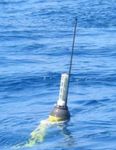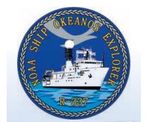"Ozobot Bit" - Computer Science Engineering Program Post Visit Activity Resources 2020 - PGCPS
←
→
Page content transcription
If your browser does not render page correctly, please read the page content below
Winter/Spring 2020 Dear Third Grade Visiting Classroom Teacher, It is hoped that you and your students enjoyed your visit to the Howard B. Owens Science Center today participating in the 3rd Grade “Ozobot Bit” Computer Science Engineering Program. The Post-Visit Activities enclosed in this packet are designed to make students aware of how robotics are being used to advance scientific understanding of the Earth and beyond and to help them expand the computer science skills introduced during their on-site program. In the first activity, “Real World Science Robot Trading Cards”, students select a robotic science trading card, read the question on the front of the card, read the information on the back of the card to answer the question and share information about their robot with students at their table. The second, “Exploring the Ocean with Okeanos ROV” Live Expedition activity link provides the opportunity to remotely participate in Okeanos at Sea expeditions and the chance to view underwater marine life habitats and geologic features seeing first how hand robots enable scientists the ability to explore in places humans cannot yet go. Finally, the packet contains a Post Program Evaluation. Thank you for taking time to complete and return the form to Owens. Your feedback is important to us in planning program design as well as in providing important documentation of the benefits of having a science center to support and enhance classroom instruction. The staff of the Owens Science Center looks forward to your feedback and next visit! Sincerely, Sallie M. Smith Sallie M. Smith, Computer Science/Robotics Instructor Howard B. Owens Science Center
Post Visit Activity # 1
Real-World Science Robots Trading Cards
Overview: In this activity, students read trading cards to learn how specific robots are being
used to advance scientific understanding of the Earth and Beyond.
Teacher Preparation: Print and cut out the Robotic Trading Cards so that there are enough
cards for each student to have one.
Student Activity Directions: Each student will:
Select one “Real-World Science Robots” Trading Card.
Read the Question on the front of the card with the picture.
Read the information on the back of the card.
Be ready to answer the question on the front of the card in small student table groups.
Robotic ROVER Geologists
ARGO FLOATS
Robotic Surface Wave Gliders
Q. What have NOAA’s “Wave Q. What things on Mars have NASA Q. What things have Argo Floats been
Gliders” been programed to monitor? ROVERS been programmed to do? programmed to monitor?
Robotic Sun Photometer Sea ICE ROBOT
Robotic Airplane
Q. What has NASA’s Altair Robotic
Q. What has NASA’s Robotic Sun Airplane been programmed to do? Q. What has the Sea Ice Robot been
Photometer been programmed to do? able to do that is difficult for humans?Post Visit Activity # 1
Real-World Science Robots Trading Cards
Overview: In this activity, students read trading cards to learn how specific robots are being
used to advance scientific understanding of the Earth and Beyond.
Teacher Preparation: Print and cut out the Robotic Trading Cards so that there are enough
cards for each student to have one.
Student Activity Directions: Each student will:
Select one “Real-World Science Robots” Trading Card.
Read the Question on the front of the card with the picture.
Read the information on the back of the card.
Be ready to answer the question on the front of the card in small student table groups.
Robotic Surface Wave Gliders Robotic ROVER Geologists ARGO FLOATS
Wave Gliders are robots used for ocean NASA Robotic ROVER Geologist have NOAA Argo Floats are robots programmed to
research. The energy from waves is used to cameras that send scientists images of the monitor ocean temperature, salinity and the
thrust the glider forward and solar panels surface of Mars and have science movement of ocean currents. The Floats are
provide energy to charge batteries needed to instruments that collect information about programmed to dive deep into the water,
operate science sensors and communication the composition of the rocks and soils on collect data as they rise to the surface and
systems which send the collected science data Mars. Rovers on the surface of Mars have then using an antenna transmit the science
from the glider to satellites in space to communication system and antennas that data to satellites orbiting the Earth which
computers on shore. Scientists can view wave transmit the science information to satellite
transmit science data to satellites orbiting
glider science data information using any dishes and then computers on the surface of
Mars and then the satellites transmit the
computer connected to the Internet. Wave the Earth. There are over 3,000 Argo Floats
science information back to Earth. The
gliders are programmed where to go and to collecting information about the Earth’s
Robotic Rover Geologists help scientists on
can collect ocean temperature, pH salinity and Ocean. There’s even Argo Floats in our local
Earth determine if Mars was once a planet
CO2 data. The gliders can operate for hundreds Chesapeake Bay!
of miles and many months.
that could have living things on it.
=
SEA ICE ROBOT
Robotic Sun Photometer Robotic Airplane
Australia Sea Ice Robot allows
NASA Aeronet Sun Photometers are NASA’s Altair uninhabited aerial
scientists the ability to observe ocean
robots programmed to measure the plane has been programmed to ecosystems under thick sea ice. The
amount of sunlight reaching the performs high altitude Earth Sea Ice Robot is tethered (on a string)
surface of the Earth where the robot
Science Missions. The Altair is and lowered through a hole in the Sea
is located. This information is
equipped with infrared sensor Ice. The programmed Sea Ice Robot
transmitted to scientists by computers
cameras which have helped fire- has motors to move and cameras that
and the Internet. This information
fighters locate people in fires. The video its surroundings.
helps scientist calculate how many
aerosols such as ash, dust, soot are in Altair has also been programmed
This robot can travel where scientists
the environment keeping sunlight with “see and avoid” technologies
cannot yet go. Lots of life under the
from reaching the surface of the so it doesn’t run into anything Antarctic Sea Ice.
Earth. while it’s flying.Post Visit Activity # 2
Remotely Exploring the Ocean with Okeanos ROV’s
Okeanos is “America’s ship for Ocean Science Exploration. The Okeanos ship is equipped with
sonar science instruments which send pulses of sounds to the bottom of the ocean and wait for
the sound to bounce off the bottom of the ocean and return to the ship to make maps of what
the bottom of the ocean looks like.
Okeanos also lowers ROV – Remotely Operated Vehicles to explore beneath the surface of the
ocean. The ROV has cameras that show scientists what the area looks like where the ROV is
exploring. The ROV also has robotic arms that ship ROV operators can move using joy sticks to
collect ocean samples for scientists to study.
The Okeanos “Live Expedition” link allows anyone the ability to view the SONAR, SHIP and ROV
Expedition Mission. Students might be very interested in viewing ocean underwater geology
and marine life.
http://oceanexplorer.noaa.gov/okeanos/media/exstream/exstream.htmlYou can also read
























































